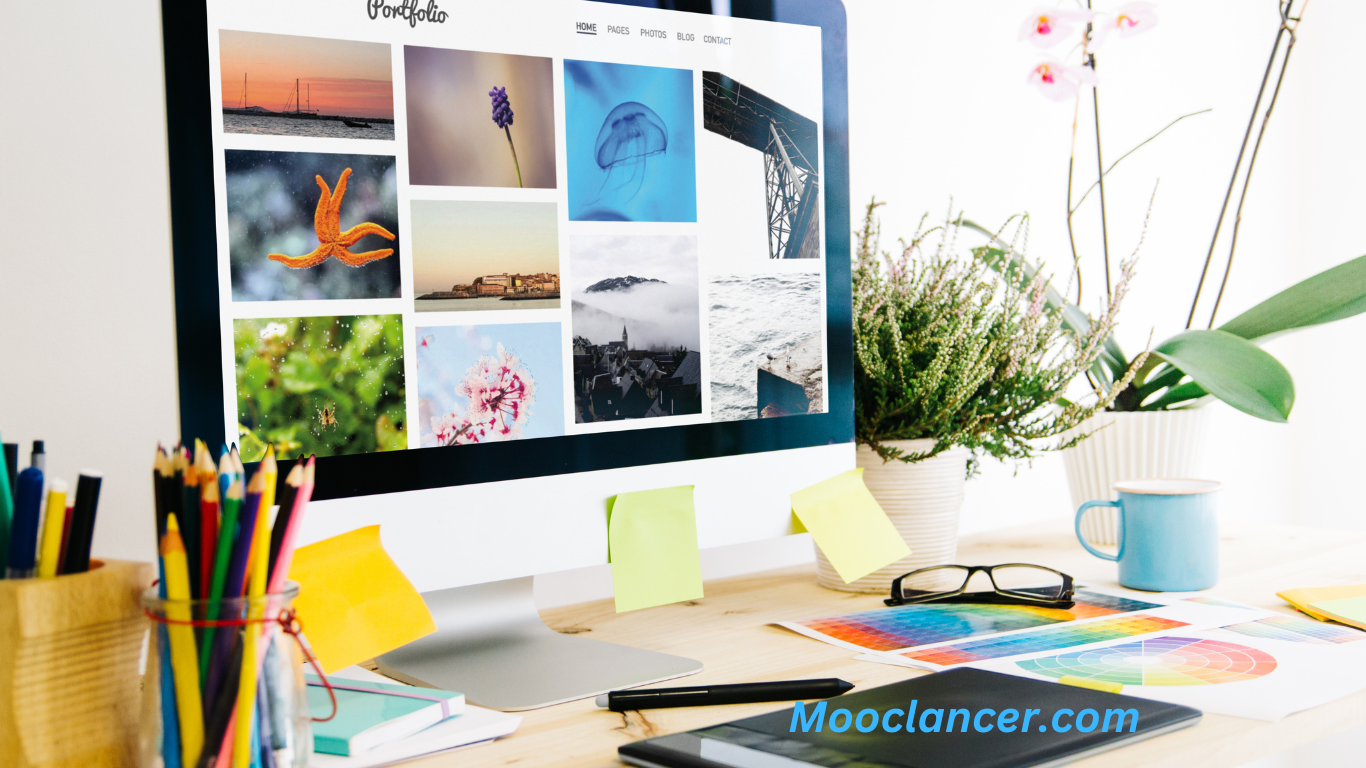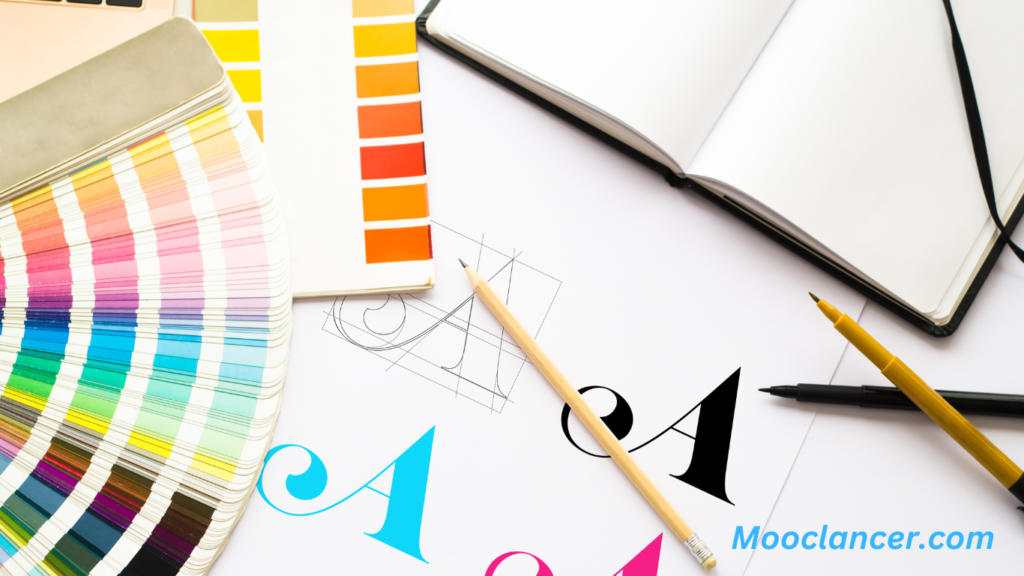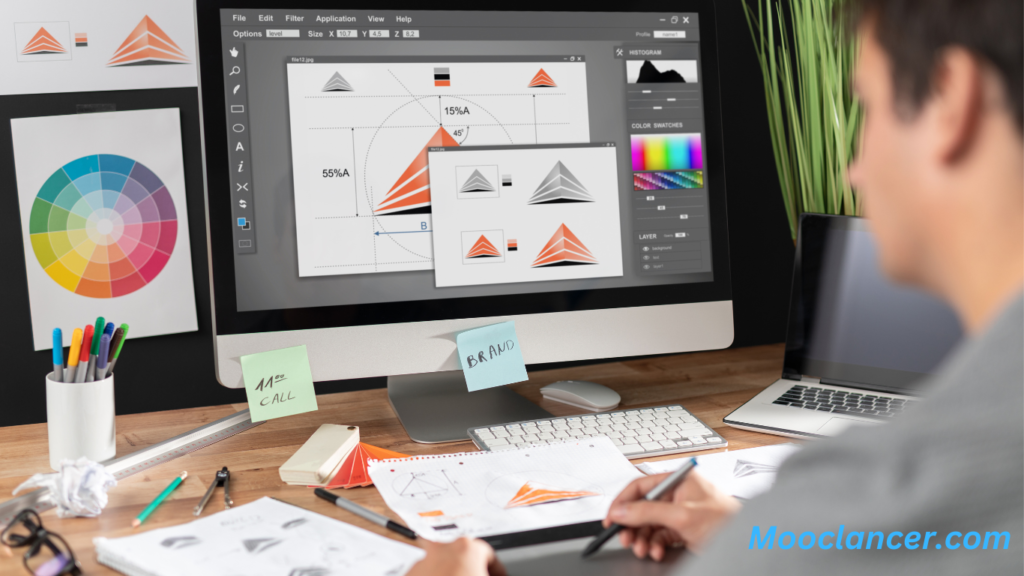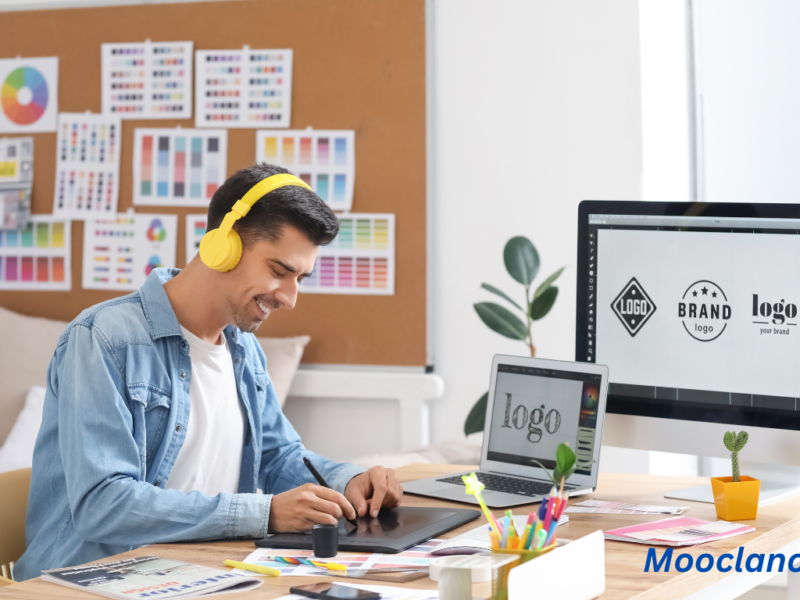Graphic design is a multifaceted discipline focused on visual communication, employing a blend of images, typography, and design principles to convey information. At its core, graphic design seeks to bridge the gap between the sender of a message and the recipient, enabling effective communication.

This field encompasses various applications, from print materials like brochures and posters to digital media, including websites and social media graphics. In essence, it is a powerful tool that combines creativity with strategy, making it essential for effective communication in various contexts.
Fundamental Aspect of Graphic Design
- Its reliance on both creativity and technical proficiency. To create visually appealing compositions, designers must understand design principles, such as alignment, contrast, hierarchy, and balance.
- Graphic design bridges various forms of communication—print, digital, or environmental. Designers utilize typography, imagery, and layout to create cohesive and engaging experiences for users and viewers.
- Graphic design encapsulates the art of organizing and presenting information visually. This dynamic discipline is essential in various fields, including marketing, branding, and user experience design.
Key Concepts in Graphic Design
Graphic design relies on various fundamental concepts to achieve effective communication through visual means. When designers implement a clear visual hierarchy, it enhances user experience, allowing individuals to process information more efficiently.
- Visual hierarchy refers to the arrangement of elements in a design so that viewers can easily identify.
- Balance pertains to the distribution of visual weight within a composition.
- Contrast using different colours, shapes, and textures to create a visual distinction between elements.
- Alignment is a crucial design principle that helps organize elements within a layout.
Understanding and applying these key concepts—visual hierarchy, balance, contrast, and alignment—are essential for any designer seeking to create impactful and effective graphic design.
Check out this article about: What do graphic designers make?
The Role of Color in Graphic Design
Colour plays a vital role in graphic design, influencing not only the aesthetics of a piece but also conveying messages and evoking emotions. Understanding colour theory is essential for any designer, as it provides the foundation for effectively using colour in visual communication to create visually appealing designs.

Different colours can evoke varying feelings. For instance, red often symbolizes passion or urgency, while blue fosters calmness and trust. Brands strategically choose colours in their logos and marketing materials to elicit specific emotional responses from their audience. For example, green is commonly associated with health and nature, making it a favoured choice for eco-friendly brands.
Typography: The Art of Text
Typography stands as a pivotal element of graphic design, as it involves the art and technique of arranging type to make written language legible and visually appealing. Fonts can convey emotions and personalities. For instance, a clean sans-serif typeface may evoke modernity, while a script font can suggest elegance and creativity.
Readability is a critical aspect of typography that designers must carefully consider. The selected font should match the design aesthetic and maintain clarity, ensuring the audience easily understands the text. Factors such as font size, line spacing, and letter spacing contribute to the text’s readability. If the typography is hard to read, the intended message may be lost, diminishing the design’s effectiveness.
Popular Graphic Design Software
Graphic design has become an integral part of various industries, and the software tools utilized in this field are crucial for creating visual content. Among the most widely used graphic design software, Adobe Photoshop, Illustrator, and InDesign stand out due to their extensive functionalities and versatility.

- Adobe Photoshop Its powerful features allow designers to manipulate images, create designs, and enhance photographs. With tools for layering, colour correction, and effects, Photoshop frequently enables photo editing, digital painting, and web design projects. The ability to work with pixels makes it a fundamental software for designers focused on detailed imagery.
- Adobe Illustrator specialized in vector graphics. This software widely operates in designing logos, icons, and illustrations that require scalability without losing quality. Illustrator’s unique features, such as the Pen tool and various shape tools, enable designers to produce intricate vector artwork. This is an ideal choice for projects that demand precise manipulation of shapes and designs and must be resized for different applications.
- Adobe InDesign is a tailored program for layout design and publishing. This software excels in creating print and digital publications, including brochures, magazines, and eBooks. Its robust features for text manipulation, page layout, and integration of graphics make it an essential tool for designers involved in publication design. InDesign’s ability to handle large volumes of content efficiently adds to its popularity among professionals in the print media industry.
These graphic design tools have become essential in crafting various visual materials. Each software has distinct features that cater to specific design aspects, making them invaluable resources for designers striving to bring their creative visions to life.
Essential Graphic Design Tools
Graphic design is an intricate field that blends creativity with technology, necessitating various tools and materials to ensure successful outcomes. Both traditional and digital tools play critical roles in the design process. Understanding these essential graphic design tools is vital for designers navigating their projects.
- Traditional tools include sketchpads, pencils, and markers that enable artists to conceptualize their ideas.
- Digital tools, including Graphic tablets, enhance precision and facilitate a natural drawing experience.
In summary, the fusion of traditional and modern graphic design tools equips designers with the necessary resources to bring their visions to life effectively, ensuring that their creative processes are efficient and innovative.
Future Trends in Graphic Design
several emerging trends promise to redefine this creative field’s landscape. One of the most significant influences on the future of design is the rise of artificial intelligence (AI). Designers are increasingly harnessing AI tools to automate repetitive tasks, allowing them to focus on more complex projects requiring human creativity and insight.
Another transformative technology is augmented reality (AR). This feature allows designers to blend digital elements with the physical world, offering user experiences previously thought impossible. For instance, AR has opened new avenues for product displays, marketing campaigns and interactive installations.
In conclusion, the graphic design future has significant transformation driven by advanced technologies such as AI and AR, a commitment to sustainability, and a continued emphasis on minimalism. As designers adapt to these changes, the field will witness creative innovations that redefine visual communication.


One thought on “What is Graphic Design?”